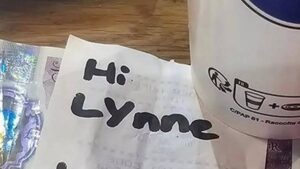
Customer Service Recovery Skill #1: Get Off To A Good Start
Service recovery — dealing with escalations, difficult situations and demanding customers — will increasingly be a requisite tool for those working in customer service. Recent research also suggests that turning negative situations into positive outcomes is one of the two factors in creating “WOW” customer experiences.
This is the first of three installments with samples of the types of service recovery skills that will hep you succeed.
Service Recovery Skill #1: Set The Tone
By the time customers have connected with you regarding a problem, they most likely have already made attempts to resolve it. They have explored self-serve options or communicated with someone else in your organization without satisfaction. They are already frustrated and feel that they have already invested too much effort. This means that, before you do anything else, you need to communicate two things:
- That you genuinely care about them
- That their problem is now your problem
Here are three things you absolutely have to do to send these messages:
1. “Let’s see how we can fix this.”
This simple sentence (or something similar) needs to be the first words out of your mouth after the customer tells you they have a problem. It communicates that you want to create a positive outcome, and that you want to work with them.
It needs to come before asking what their account number is, or asking for more details. Customers need immediate reassurance that you are taking ownership of the issue.
2. Validate their frustration
Once you have the details you need to let customers know that, as a fellow human being, you share their frustration. You can do this informally, with simple comments such as “Oh wow…” or “That’s terrible!” or more formally with statements like, “From what you’ve told me, I sure can understand why you’re frustrated.” They need to know that you understand what they’ve been going through.
3. Tell them the plan
If it is an issue that you can correct right away, tell customers what you’re going to do. If you have to do a bit of research or explore some options, tell them that too. The last thing you want is for them to wonder what you are doing. Saying something like, “I think there might be a couple of options here, and I want to make sure I get the right one so that this is fixed quickly and doesn’t happen again,” goes a long way to letting them know you are competent and intent on a successful outcome.
Failure to set the right tone at the beginning of a negative interaction can make things go sideways very quickly. Make sure that this a service recovery skill you’ve mastered before anything else!
“It doesn’t matter how competent or knowledgeable you are. If customers think you don’t care, they aren’t coming back”
{Reprinted with permission from the Winning At Work! Newsletter}











